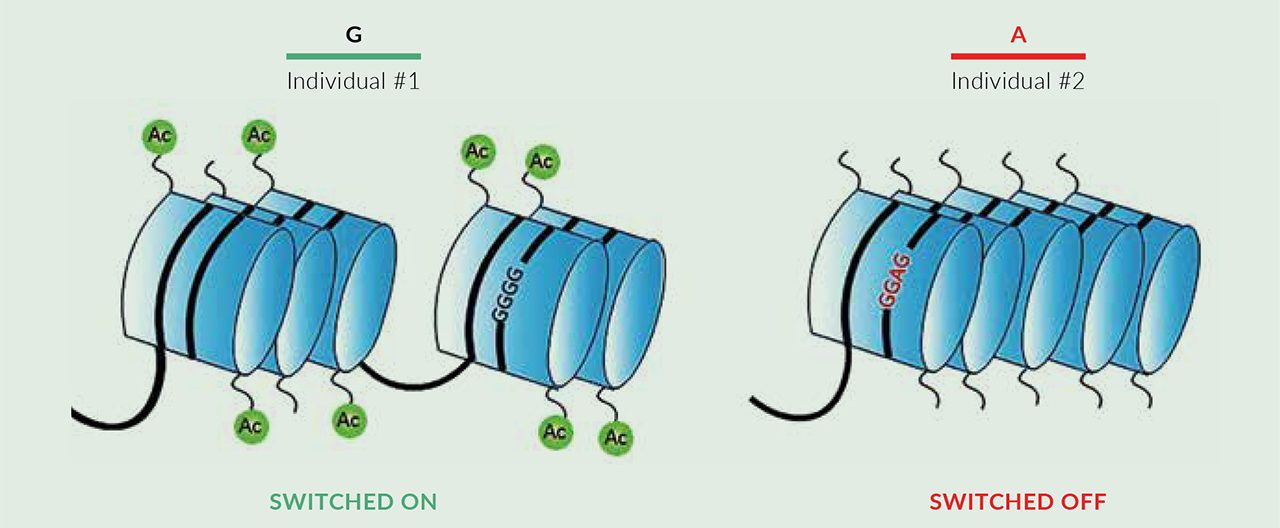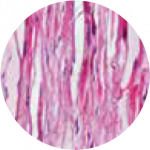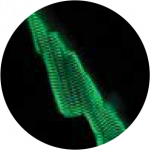Genetic Map of the Heart Opens New Ways of Understanding Heart Disease
By Dr Khor Ing Wei
Heart disease is the top cause of death worldwide. In Singapore, it accounts for one third of all deaths each year.1,2
It is a complex set of diseases that is influenced by many different genes.3 To figure out the genetic basis of such complex diseases, researchers study how different parts of the genome (made up of both genes and the non-coding elements between them) interact physically with one another inside the tight, small space of the nucleus.
![]()
1/3
of deaths in Singapore
is caused by heart disease
The human genome is incredibly vast, as evidenced by the fact that a single human genome print-out occupies over a hundred volumes of minuscule text housed at the Wellcome Collection in London, U.K. Superimpose the network of physical contacts formed from the connections between different sections of a single genome and one gets a sense of the enormous challenge in understanding which interactions are important for a particular disease.
To help identify the important interactions involved in heart disease, Professor Roger Foo from the Department of Medicine at NUS Medicine and Senior Consultant at the National University Heart Centre, NUH, has led a research team to develop the first heart genomic “connectome.” This connectome is a map of the genes in the heart and the “switches” that connect to and control them. This work was published as two companion publications in the journals Circulation and Circulation Research. The papers were co–first-authored by Assistant Professor Chukwuemeka George Anene-Nzelu, PhD students Wilson Tan and Mick Lee, as well as Dr Eleanor Wong.
“Using the connectome, we were also able to identify new genes associated with heart disease. These could serve as targets for the development of novel treatments for these diseases.”
— A/Prof Anene-Nzelu
“Humans have the same number of genes as flies or worms—around 20,000,” explained Prof Foo. “What makes us more complex than a fly is that we have a lot more switches that turn these genes on or off.”

These switches are in turn controlled by changes in the DNA code (either G or A in this example). Credit: Mick Lee
The switches are mostly in the non-coding elements in the genome, i.e. the portions of DNA between genes. They can be flipped on or off according to differences in the DNA code at the section of the switch, which are called variants. For example, in one individual, a variant G may mean that the switch is flipped on. In another individual, a different variant A may mean that the switch stays off (see image above). To make things more complicated, each gene has more than one switch, and switches may be very far away from the genes they control, making it difficult to identify which switch controls which gene just from looking at the DNA code.

A cross sectional view of the heart muscle.
Credit: NUS Medicine

An image of a single cardiomyocyte that makes up the heart muscle.
Credit: A/Prof Matthew Andrew Ackers-Johnson (NUS Medicine)
The connectome map developed by the NUS Medicine team shows where these switches are and pinpoints the most important switches for each gene in the map. Significantly, they found that a series of 59 new variants which influence key switches for particular genes may play important roles in the function of those genes in heart disease.
“Our connectome helps to make sense of the human genome by highlighting the sections and interactions that are relevant for various organs, such as the heart. This could make it possible to analyse the functions of the entire genome someday,” said Prof Foo.
Added A/Prof Anene-Nzelu, “Using the connectome, we were also able to identify new genes associated with heart disease. These could serve as targets for the development of novel treatments for these diseases.”
Watch to find out more about this discovery!
REFERENCES
1 World Health Organization. Cardiovascular diseases (CVDs) Fact Sheet. https://www.who.int/en/news-room/fact-sheets/detail/cardiovascular-diseases-(cvds). Updated May 17, 2017. Accessed June 18, 2020.
2 Singapore Heart Foundation. Heart Statistics – Singapore Statistics. https://www.myheart.org.sg/my-heart/heart-statistics/singapore-statistics/. Updated 2020. Accessed June 18, 2020.
3 Kathiresan S, Srivastava D. Genetics of Human Cardiovascular Disease. Cell. 2012;148:1242-1257.
